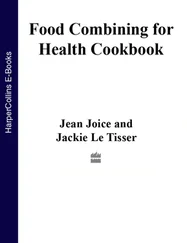Soil Health Analysis, Set
Здесь есть возможность читать онлайн «Soil Health Analysis, Set» — ознакомительный отрывок электронной книги совершенно бесплатно, а после прочтения отрывка купить полную версию. В некоторых случаях можно слушать аудио, скачать через торрент в формате fb2 и присутствует краткое содержание. Жанр: unrecognised, на английском языке. Описание произведения, (предисловие) а так же отзывы посетителей доступны на портале библиотеки ЛибКат.
- Название:Soil Health Analysis, Set
- Автор:
- Жанр:
- Год:неизвестен
- ISBN:нет данных
- Рейтинг книги:3 / 5. Голосов: 1
-
Избранное:Добавить в избранное
- Отзывы:
-
Ваша оценка:
- 60
- 1
- 2
- 3
- 4
- 5
Soil Health Analysis, Set: краткое содержание, описание и аннотация
Предлагаем к чтению аннотацию, описание, краткое содержание или предисловие (зависит от того, что написал сам автор книги «Soil Health Analysis, Set»). Если вы не нашли необходимую информацию о книге — напишите в комментариях, мы постараемся отыскать её.
Soil Health Analysis, Set — читать онлайн ознакомительный отрывок
Ниже представлен текст книги, разбитый по страницам. Система сохранения места последней прочитанной страницы, позволяет с удобством читать онлайн бесплатно книгу «Soil Health Analysis, Set», без необходимости каждый раз заново искать на чём Вы остановились. Поставьте закладку, и сможете в любой момент перейти на страницу, на которой закончили чтение.
Интервал:
Закладка:
29 Kaspar, T.C., and Parkin, T.B. (2011). Soil carbon dioxide flux in response to wheel traffic in a no‐till system. Soil Sci. Soc. Am. J. 75(6), 2296–2304. doi:10.2136/sssaj2011.0129
30 Keen, B.A. (1931). The physical properties of the soil. Rothamsted monograph on Agricultural Science. Ser. London: Longmans, Green and Co.
31 King, F.H. 1911. Farmers of forty centuries. Madison, Wisconsin: F.H. King.
32 Ladoni, M., Basir, A., and Kravchenko, A. (2015). Which soil carbon fraction is the best for assessing management differences? A statistical power perspective. Soil Sci. Soc. Am. J. 79(3), 848–857. doi:10.2136/sssaj2014.10.0426
33 Ladoni, M., Basir, A., Robertson, P.G., and Kravchenko, A.N. (2016). Scaling‐up: Cover crops differentially influence soil carbon in agricultural fields with diverse topography. Agric. Ecosyst. Environ. 225, 93–103. doi:10.1016/j.agee.2016.03.021
34 Li, C., Fultz, L.M., Moore‐Kucera, J., Acosta‐Martínez, V., Horita, J., Strauss, R., Zak, J., Calderon, F., and Weindorf, D. 2017. Soil carbon sequestration potential in semi‐arid grasslands in the Conservation Reserve Program. Geoderma 294, 80–90. doi:10.1016/j.geoderma.2017.01.032
35 Li, C., Fultz, L.M., Moore‐Kucera, J., Acosta‐Martínez, V., Kakarla, M., and Weindorf, D.C. (2018). Soil microbial community restoration in Conservation Reserve Program semi‐arid grasslands. Soil Biol. Biochem. 118, 166–177. doi:10.1016/j.soilbio.2017.12.001
36 Lowdermilk, W.C. (1953). Conquest of the land through 7000 years. Washington, D.C.: USDA Soil Conservation Service, U.S. Department of Agriculture.
37 Magdoff, F., and van Es, H . (2009). Building soils for better crops: Sustainable soil management , 3rd ed. Sustainable Agriculture Research and Education, Handbook Series Book 10. College Park, MD: Sustainable Agriculture Research and Education.
38 McBratney, A., Field, D.J., and Koch, A. (2014). The dimensions of soil security. Geoderma 213, 203–213. doi:10.1016/j.geoderma.2013.08.013
39 Mena Mesa, N., Ruiz‐Vega, J., Funes‐Monzote, F.R., Carrillo‐Rodriguez, J.C., and Velasco‐Velasco, V. (2014). Indicators of agroecological sustainability of three tillage systems for maize (Zea mays L.) production. Agroecology and Sustainable Food Systems 38(4), 410–426. doi:10.1080/21683565.2013.870626
40 Moebius‐Clune, B.N., Moebius‐Clune, D.J., Gugino, B.K., Idowu, O.J., Schindelbeck, R.R., Ristow, A.J., van Es, H.M., Thies, J.E., Shayler, H.A., McBride, M.B., Kurtz, K.S.M., Wolfe, D.W., and Abawi, G.S. (2016). Comprehensive assessment of soil health–The Cornell framework , edition 3.2, Geneva, NY: Cornell University.
41 Montgomery, D.R. (2007). Dirt: The erosion of civilizations , 2nd ed. Berkeley, CA: University of California Press.
42 Morrow, J.G., Huggins, D.R., Carpenter‐Boggs, L.A., and Reganold, J.P. (2016). Evaluating measures to assess soil health in long‐term agroecosystem trials. Soil Sci. Soc. Am. J. 80, 450–462. doi:10.2136/sssaj2015.08.0308
43 Mulder, V.L., de Bruin, S., Schaepman, M. (2011). The Use of Remote Sensing in Soil and Terranin Mapping‐ A Review. Geoderma 162 (1–2): 1–19, https://doi.org/10.1016/j.geoderma.2010.12.018
44 Necpálová, M., Anex Jr., R.P., Kravchenko, A.N., Abendroth, L.J., Del Grosso, S.J., Dick, W.A., Helmers, M.J., Herzmann, D., Lauer, J.G., Nafziger, E.D., Sawyer, J.E., Scharf, P.C., Strock, J.S., and Villamil, M.B. (2014). What does it take to detect a change in soil carbon stock? A regional comparison of minimum detectable difference and experiment duration in the north central United States. J. Soil Water Conserv. 69(6), 517–531. doi:10.2489/jswc.69.6.517
45 Ontl, T.A., Cambardella, C.A., Schulte, L.A., and Kolka, R.K. (2015). Factors influencing soil aggregation and particulate organic matter responses to bioenergy crops across a topographic gradient. Geoderma 255–256, 1–11. doi:10.1016/j.geoderma.2015.04.016
46 Rasul, G., and Thapa, G.B. (2004). Sustainability of ecological and conventional agricultural systems in Bangladesh: An assessment based on environmental, economic and social perspectives. Agric. Syst. 79(3), 327–351. doi:10.1016/S0308‐521X(03)00090‐8
47 Reicosky, D.C. (2015). Conservation tillage is not conservation agriculture. J. Soil Water Conserv. 70(5), 103–108. doi:10.2489/jswc.70.5.103A
48 Roper, W.R., Osmond, D.L., Heitman, J.L., Wagger, M.G., and Reberg‐Horton, S.C. (2017). Soil health indicators do not differentiate among agronomic management systems in North Carolina soils. Soil Sci. Soc. Am. J. 81(4), 828–843. doi:10.2136/sssaj2016.12.0400
49 Rule, G.K. (1937). Conserving corn belt soils. Farmers’ Bulletin No. 1795. Washington, D.C.: U.S. Gov. Print. Office.
50 Schindelbeck, R.R., van Es, H.M., Abawi, G.S., Wolfe, D.W., Whitlow, T.L., Gugino, B.K., Idowu, O.J., and Moebius‐Clune, B.N. (2008). Comprehensive assessment of soil quality for landscape and urban management. Landsc. Urban Plan. 88(2‐4), 73–80. doi:10.1016/j.landurbplan.2008.08.006
51 Schnepf, M., and Cox, C. (2006). Environmental benefits of conservation on cropland: The status of our knowledge. Ankeny, IA: Soil and Water Conservation Society.
52 Shoshany, M., Goldshleger, N., Argaman, E., Chudnovsky, A. (2013). Monitoring of Agricultural Soil Degradation by Remote‐Sensing Methods: A Review. International Journal of Remote Sensing 34 (17): 6152–6181, https://doi.org/10.1080/01431161.2013.793872
53 Skaggs, R.W., Breve, M.A., and Gilliam, J.W. (1994). Hydrologic and water‐quality impacts of agricultural drainage. Crit. Rev. Environ. Sci. Technol. 24(1), 1–32. doi:10.1080/10643389409388459
54 Sparks, D.L., A.L. Page, P.A. Helmke, and R.H. Loeppert, editors. 1996. Methods of soil analysis part 3—chemical methods. SSSA Book Ser. 5.3. Madison, WI: SSSA, ASA. doi:10.2136/sssabookser5.3.
55 Steffan, J.J., Brevik, E.C., Burgess, L.C., and Cerdà, A. (2017). The effect of soil on human health: A review. Eur. J. Soil Sci. 69(1), 159–171. doi:10.1111/ejss.12451
56 Stoll, S. (2003). Larding the lean earth: Soil and society in nineteenth‐century America. New York: Hill and Wang.
57 Stone, D., Ritz, K., Griffiths, B.G., Orgiazzi, A., and Creamer, R.E. (2016). Selection of biological indicators appropriate for European soil monitoring. Appl. Soil Ecol. 97, 12–22. doi:10.1016/j.apsoil.2015.08.005
58 Ulery, A.L., and Drees, R., (eds.). (2008). Methods of soil analysis: Part 5 mineralogical methods. SSSA Book Ser. 5.5. Madison, WI: SSSA. doi:10.2136/sssabookser5.5
59 USDA NRCS. (2019a). National conservation practice standards. Washington, D.C.: USDA‐NRCS. https://www.nrcs.usda.gov/wps/portal/nrcs/main/national/technical/cp/ncps/
60 USDA NRCS. 2019b. Soil health management. Washington, D.C.: USDA‐NRCS. https://www.nrcs.usda.gov/wps/portal/nrcs/main/soils/health/mgnt/
61 van Es, H.M., and Karlen, D.L. (2019). Reanalysis validates soil health indicator sensitivity and correlation with long‐term crop yields. Soil Sci. Soc. Am. J. 83(3), 721–732. doi:10.2136/sssaj2018.09.0338
62 Veum, K.S., K.W. Goyne, R.J. Kremer, Miles, R.J., and Sudduth, K.A. (2014). Biological indicators of soil quality and soil organic matter characteristics in an agricultural management continuum. Biogeochemistry 117(1), 81–99. doi:10.1007/s10533‐013‐9868‐7
63 Veum, K.S., Kremer, R.J., Sudduth, K.A., Kitchen, N.R., Lerch, R.N., Baffaut, C., Stott, D.E., Karlen, D.L., and Sadler, E.J. (2015). Conservation effects on soil quality indicators in the Missouri Salt River Basin. J. Soil Water Conserv. 70(4), 232–246. doi:10.2489/jswc.70.4.232
64 VeVerka, J.S., Udawatta, R.P., and Kremer, R.J. (2019). Soil health indicator responses on Missouri claypan soils affected by landscape position, depth, and management practices. J. Soil Water Conserv. 74(2), 126–137. doi:10.2489/jswc.74.2.126
Читать дальшеИнтервал:
Закладка:
Похожие книги на «Soil Health Analysis, Set»
Представляем Вашему вниманию похожие книги на «Soil Health Analysis, Set» списком для выбора. Мы отобрали схожую по названию и смыслу литературу в надежде предоставить читателям больше вариантов отыскать новые, интересные, ещё непрочитанные произведения.
Обсуждение, отзывы о книге «Soil Health Analysis, Set» и просто собственные мнения читателей. Оставьте ваши комментарии, напишите, что Вы думаете о произведении, его смысле или главных героях. Укажите что конкретно понравилось, а что нет, и почему Вы так считаете.












